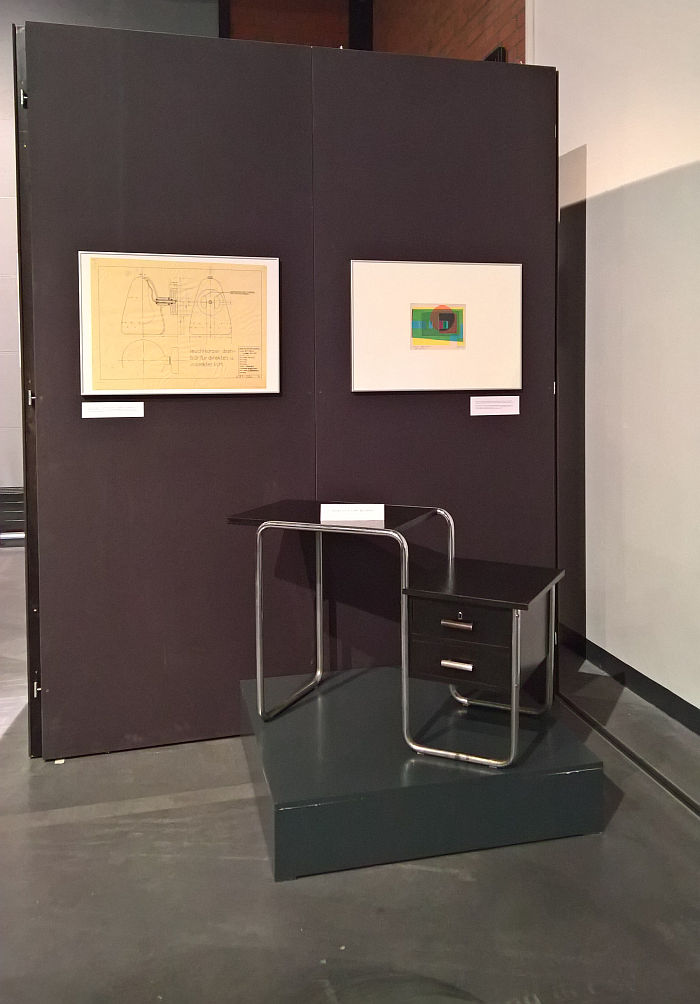Architecture | Bauhaus | Chemnitz Creative | Designer | Exhibitions and Shows | International Marianne Brandt Contest
László Moholy-Nagy may have given Marianne Brandt "mettle for metal", and metal may be the material with which she is most readily and popularly associated; however, as she wrote in 1922, "Ich bin ganz von Glas"..... I am entirely glass.
Fragile? Transparent? Opaque? Metamorphic? Refractive? Sparkling?
For its 7th edition the triennial International Marianne Brandt Contest sought projects exploring glass in all its interpretations, properties and essences; the 60 nominated projects being presented alongside a cabinet showcase devoted to Marianne Brandt in the exhibtion Ich bin ganz von Glas. Marianne Brandt and the Art of Glass Today at the Sächsische Industriemuseum Chemnitz.
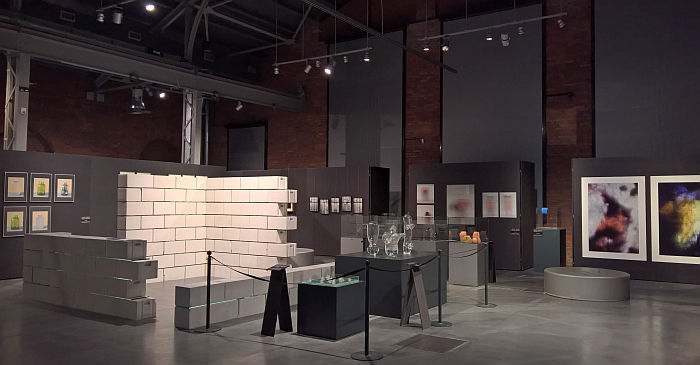
Established in 2001 and organised as a triennial competition under the motto "The Poetry of the Functional", the International Marianne Brandt Contest is open to creatives under 40, irrespective of genre, and for its 2019 edition sought submissions and considerations on the poetry of the functional in context of glass in three categories: Product Design, Experimental Design and Photography, the latter represented in the final 60, and thus in 2019 contest exhibition, by works such as, and amongst many others, Tape Studies which saw Kunsthochschule für Medien Cologne graduate Stefanie Pluta photograph the broken and taped-up glass panels of Duisburg train station, a 1930s steel and glass construction that is, it's fair to say, in a pretty bad way, we change trains fairly regularly in Duisburg and can attest to its condition, and which as a project not only highlights the highly graphic forms that can be arise through such remedial actions, but also the transience of not only glass but of 1930s steel and glass architecture, and thus the ideals of the inter-War Modernists. Similarly relying on random process and the unconscious actions of others, the photographs from Elias Wessel's project Die Summe meiner Daten visualise the contact with and movement over smartphone/tablet screens, contact and movement that, in Elias's hands results in monumental abstract expressionist photographs, and where one must remind oneself that they are photographs; and an impression of a painting in a photographic work also found in the Lichtgrafik series by Regine Bartholdt, works created via a process, or perhaps more put, via a combination of processes, which we don't fully understand, but feel no need to fully understand, Regine obviously does, that is important, as is the very obvious fact that she also understands how to use them to produce works which are are not only highly engaging, but an utter joy.
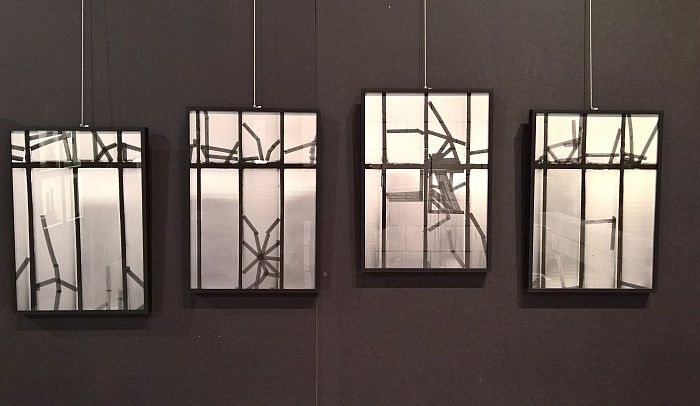
Elsewhere the Product Design category featured works such as One Fold by TU Berlin graduate Fabian Prissok, a very satisfying pleated acrylic glass object created in one operation, i.e. by numerous simultaneous folds, and a work which confuses and delights in equal measure, and which also promises a most interesting collection; the Product Design category also allowed for two unexpected, and thus all the more welcome, Wiedersehen: one with Ordre Coulant by Weißensee Kunsthochschule Berlin student Christin Amann, which features/featured in the exhibition table talks — Tischgespräche at the Kunstgewerbemuseum Dresden, and a family of objects which incorporate the knick that used to be placed in table clothes to ensure an accurate setting at banquets. And also a Wiedersehen with KOR by Martin Tony Häussler, an object which through its mention here becomes, we believe, the object most featured in these dispatches, as in ever: from its first presentation in Kassel over Frankfurt, Kortrijk, Milan and now in Chemnitz. And an object which at no point has it lost any of its majesty, fascination, opulence, honesty, joy, ingenuity or delicious simplicity.
In addition we were particularly taken by Philipp Weber's lamp collection Of Movement and Material, works which in contrast to the musical associations of glass-blowing which inspired Philipp's Strange Symphony project, are inspired by Oskar Schlemmer's considerations on the human body in space and time and also by the dance between maker and material, the objects arising not from blowing, but from moving; the project Mille-feuille Plyglass by Aki Toishi which sees thin glass sheets moulded à la plywood, and which not only visualises a fascinating future of possibility in terms of the use of glass in objects of every day use, and that beyond foldable phones, but also helps underscore the importance of new materials in the development of architecture and design; and were also taken by mirbau'n by Michael Lapper, a truly awful Bayerism as a name but a delightful project which through simply replacing the mortar between bricks with layers of glass in an otherwise standard wall allows for a very simple, and very powerful, example of how glass's intrinsic absence and transparency can fundamentally alter our perceptions of the physical. And structures that are more than artistically and aesthetically interesting.
A phrase that could equally apply to the works and proposals on show from Marianne Brandt herself.






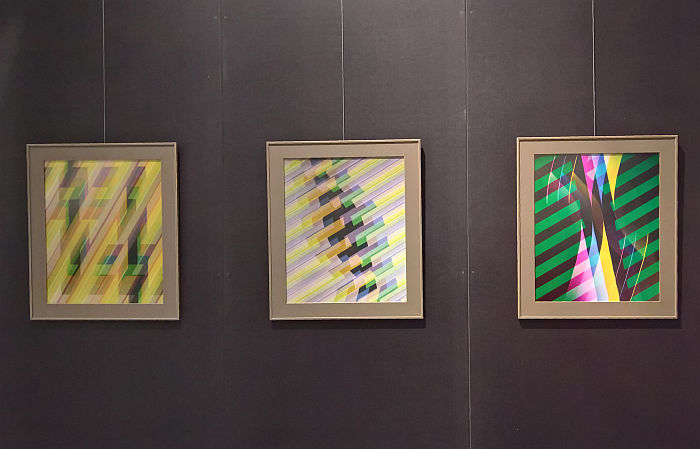
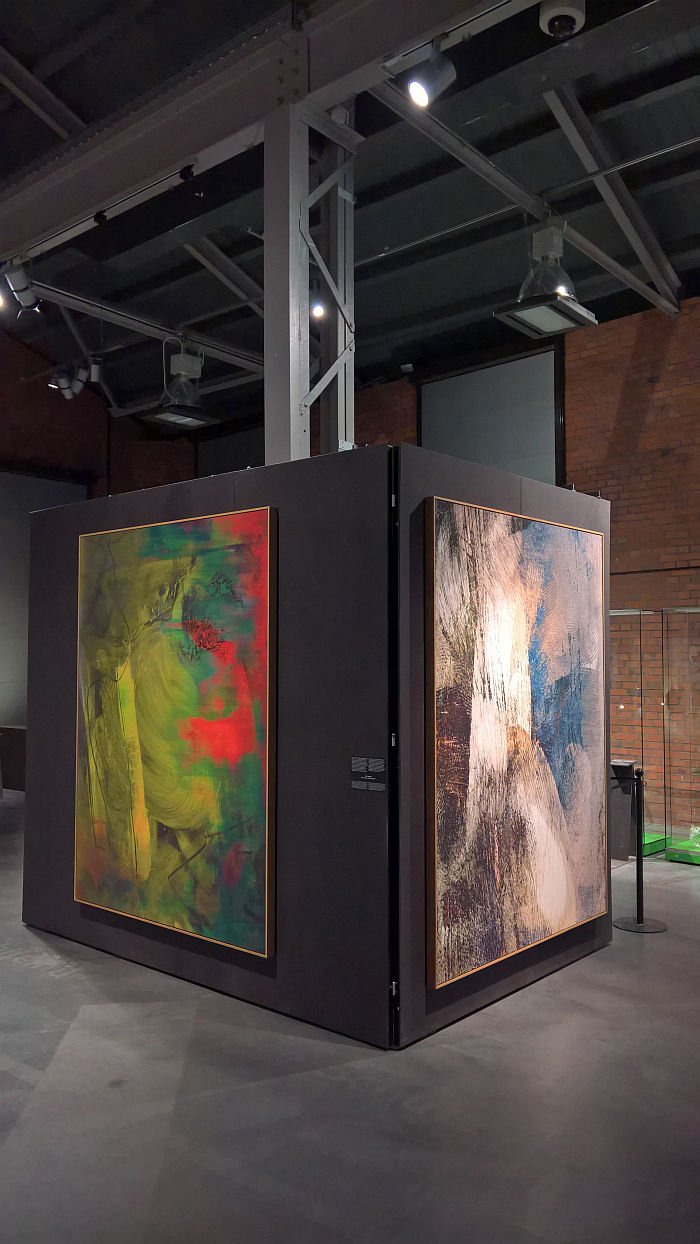

Not only one Chemnitz's most important, and interesting, children but also one of the most important, and interesting Bauhäusler, Marianne Brandt remains one of the poorer understood designers and artists of her generation. Yes, and as we've noted ad nauseam, ad infinitum, Marianne Brandt is very much the go-to female Bauhäusler for any exhibition curator looking to add a bit of gender variation to their presentation, but that is often through the same works, thereby creating a monotone impression of a multifaceted creative. Or perhaps better put was: this Bauhaus Weimar centenary year having offered a few deeper perspectives on Marianne Brandt. Something continued in Ich bin ganz von Glas.
A relatively small showcase in terms of scale but with a nice depth Ich bin ganz von Glas takes the viewer on Marianne Brandt's journey from Bauhaus over the Ruppelwerk Gotha on to the Institut für industrielle Gestaltung Berlin and back to Chemnitz, and that through a pleasing variety of objects and genres, and which allows for a very concise introduction to the life, times and works of Marianne Brandt. Which means, yes, we understand it very much as an accompanying exhibition to the contest exhibition, but a showcase none the less interesting, informative and engaging for the fact; for all Marianne Brandt's inaugural speech at the Institut für industrielle Gestaltung allows for some nice insights into her thinking and understanding of design. And that despite only being presented by 2 from 11 pages. Surely for such an exhibition all 11 could have reproduced, surely?
As with the many Wiedersehen in the contest exhibition a lot of the exhibits in Ich bin von Glas also featured in Four “Bauhausmädels” at the Angermuseum Erfurt, including several rarely/never? seen photographs, sketches for unrealised 1950s objects and Marianne Brandt's desk, an almost child-sized wood and tubular steel object by Marcel Breuer through Thonet; the one Wiedersehen which sadly doesn't 't occur is with the cactus stand Marianne Brandt developed for Ruppelwerk Gotha and which was presented as part of Bauhaus_Sachsen at the Grassimuseum Leipzig. A myriad of other Ruppelwerk objects are however featured either as themselves, in photographs, including four of a coffee maker which not only demonstrates Marianne Brandt did work with glass, but also is formally and functionally very similar to a so-called storm and house lantern she developed for Ruppelwerk. And also as sketches for proposals for small furniture items, one in particular looking well worth pursuing further; as indeed do most all the other unrealised sketches and plans on show, and which, and as we noted from Four “Bauhausmädels”, indicate the canon of works Marianne Brandt could have developed had she been given the chance in 1950s East Germany. And which she famously wasn't. And which underscores why it is important and relevant that we all develop a better, fuller, richer, understanding of Marianne Brandt. And in which context the glass in Ich bin ganz von Glas should be considered less a looking glass and more a magnifying glass.
Ich bin ganz von Glas. Marianne Brandt and the Art of Glass Today runs at the Sächsische Industriemuseum, Zwickauer Straße 119, 09112 Chemnitz until Sunday December 1st
Full details can be found at https://saechsisches-industriemuseum.com/ich-bin-ganz-von-glas
And full details on the International Marianne Brandt Contest can be found at https://marianne-brandt-wettbewerb.de
And last, but by no means least, the 2019 International Marianne Brand Contest Winners... Congratulations to all!!
Photography:
Tape Studies by Stefanie Pluta (Cologne)
Experimental Design:
LEVEL, SCREEN, SWAYING by Yvon Chabrowski (Leipzig)
Product Design:
AO – Tea Cans by Valeska Tullney (Hamburg)
Special Prize donated by the New School of Photography Berlin:
Imperfections by Lara Lütke (Weimar)
Special Prize donated by LUMALENSCAPE:
GLASS + [X] = EXUVIA by Anna Holzapfel (Berlin)



